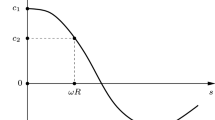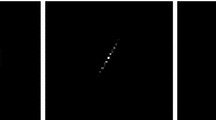Abstract
There are two popular ways to implement anisotropic diffusion filters with a diffusion tensor: Explicit finite difference schemes are simple but become inefficient due to severe time step size restrictions, while semi-implicit schemes are more efficient but require to solve large linear systems of equations. In our paper we present a novel class of algorithms that combine the advantages of both worlds: They are based on simple explicit schemes, while being more efficient than semi-implicit approaches. These so-called fast explicit diffusion (FED) schemes perform cycles of explicit schemes with varying time step sizes that may violate the stability restriction in up to 50 percent of all cases. FED schemes can be motivated from a decomposition of box filters in terms of explicit schemes for linear diffusion problems. Experiments demonstrate the advantages of the FED approach for time-dependent (parabolic) image enhancement problems as well as for steady state (elliptic) image compression tasks. In the latter case FED schemes are speeded up substantially by embedding them in a cascadic coarse-to-fine approach.
Access this chapter
Tax calculation will be finalised at checkout
Purchases are for personal use only
Preview
Unable to display preview. Download preview PDF.
Similar content being viewed by others
References
Weickert, J.: Anisotropic Diffusion in Image Processing. Teubner, Stuttgart (1998)
Höcker, C., Fehmers, G.: Fast structural interpretation with structure-oriented filtering. Geophysics 68(4), 1286–1293 (2003)
Galić, I., Weickert, J., Welk, M., Bruhn, A., Belyaev, A., Seidel, H.P.: Image compression with anisotropic diffusion. Journal of Mathematical Imaging and Vision 31(2-3), 255–269 (2008)
Perona, P., Malik, J.: Scale space and edge detection using anisotropic diffusion. IEEE Transactions on Pattern Analysis and Machine Intelligence 12, 629–639 (1990)
Lu, T., Neittaanmäki, P., Tai, X.C.: A parallel splitting up method and its application to Navier-Stokes equations. Applied Mathematics Letters 4(2), 25–29 (1991)
Weickert, J., ter Haar Romeny, B.M., Viergever, M.A.: Efficient and reliable schemes for nonlinear diffusion filtering. IEEE Transactions on Image Processing 7(3), 398–410 (1998)
Drblíková, O., Mikula, K.: Convergence analysis of finite volume scheme for nonlinear tensor anisotropic diffusion in image processing. SIAM Journal on Numerical Analysis 46(1), 37–60 (2007)
Weickert, J., Scharr, H.: A scheme for coherence-enhancing diffusion filtering with optimized rotation invariance. Journal of Visual Communication and Image Representation 13(1/2), 103–118 (2002)
Welk, M., Steidl, G., Weickert, J.: Locally analytic schemes: A link between diffusion filtering and wavelet shrinkage. Applied and Computational Harmonic Analysis 24, 195–224 (2008)
Gentzsch, W., Schlüter, A.: Über ein Einschrittverfahren mit zyklischer Schrittweitenänderung zur Lösung parabolischer Differentialgleichungen. ZAMM, Zeitschrift für Angewandte Mathematik und Mechanik 58, T415–T416 (1978)
Gentzsch, W.: Numerical solution of linear and non-linear parabolic differential equations by a time discretisation of third order accuracy. In: Hirschel, E.H. (ed.) Proceedings of the Third GAMM-Conference on Numerical Methods in Fluid Mechanics, pp. 109–117. Friedr. Vieweg & Sohn (1979)
Alexiades, V., Amiez, G., Gremaud, P.A.: Super-time-stepping acceleration of explicit schemes for parabolic problems. Communications in Numerical Methods in Engineering 12, 31–42 (1996)
Bornemann, F., Deuflhard, P.: The cascadic multigrid method for elliptic problems. Numerische Mathematik 75, 135–152 (1996)
Weickert, J.: Nonlinear diffusion filtering. In: Jähne, B., Haußecker, H., Geißler, P. (eds.) Handbook on Computer Vision and Applications. Signal Processing and Pattern Recognition, vol. 2, pp. 423–450. Academic Press, San Diego (1999)
Author information
Authors and Affiliations
Editor information
Editors and Affiliations
Rights and permissions
Copyright information
© 2010 Springer-Verlag Berlin Heidelberg
About this paper
Cite this paper
Grewenig, S., Weickert, J., Bruhn, A. (2010). From Box Filtering to Fast Explicit Diffusion. In: Goesele, M., Roth, S., Kuijper, A., Schiele, B., Schindler, K. (eds) Pattern Recognition. DAGM 2010. Lecture Notes in Computer Science, vol 6376. Springer, Berlin, Heidelberg. https://doi.org/10.1007/978-3-642-15986-2_54
Download citation
DOI: https://doi.org/10.1007/978-3-642-15986-2_54
Publisher Name: Springer, Berlin, Heidelberg
Print ISBN: 978-3-642-15985-5
Online ISBN: 978-3-642-15986-2
eBook Packages: Computer ScienceComputer Science (R0)




